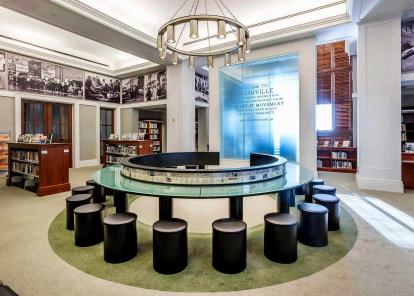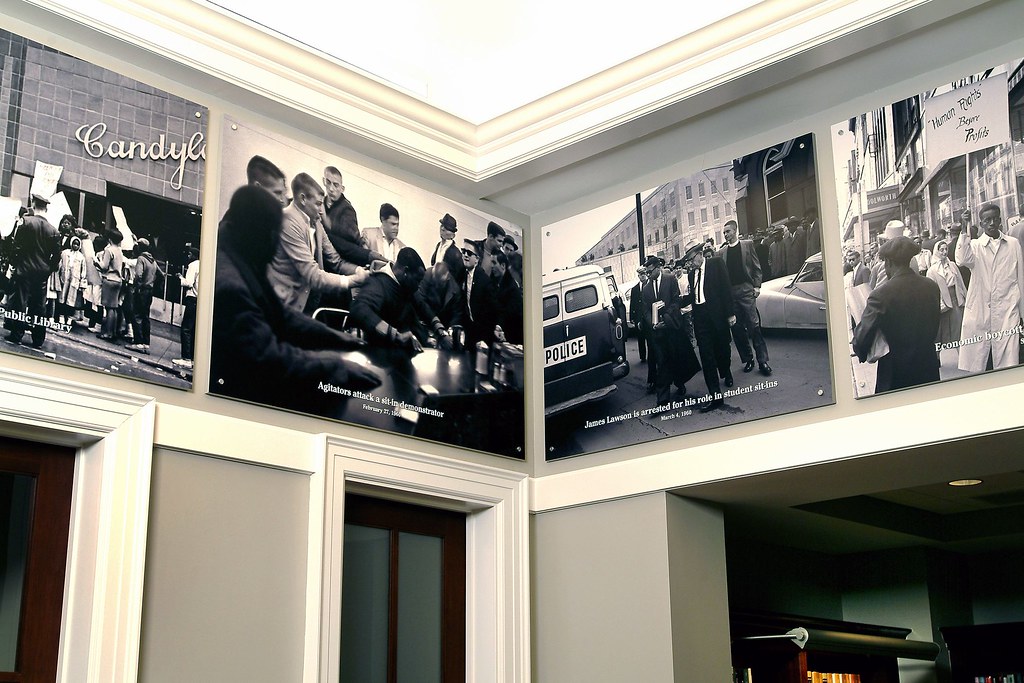About the Civil Rights Room
The Civil Rights Room is a space for education and exploration of the Civil Rights Collection. The materials exhibited here capture the drama of a time when thousands of African-American citizens in Nashville sparked a nonviolent challenge to racial segregation in the city and across the South.
In September 1957, Nashville took the first steps toward ending segregation and discrimination in its public schools. Under a court order in accord with the Supreme Court’s historic declaration that segregation laws were no longer valid, a handful of courageous parents and their first-grade children registered at five previously segregated Nashville public schools.
In February 1960, a group of students from the city’s four black colleges—American Baptist, Fisk, Meharry, and Tennessee A&I—set out to confront segregation at lunch counters, movie theaters, and other places of public accommodation.
The Civil Rights Room overlooks the intersection of Church Street and Seventh Avenue North, where nonviolent protests against segregated lunch counters took place.
Visitors can sit at the symbolic lunch counter and read the Ten Rules of Conduct carried by the protesters during the sit-ins and examine the timeline of local and national events.
Black and white photographs surround the room, illuminating dramatic events in this period of Nashville history. See parents leading their first-grade children past angry protesters, a bombing meant to intimidate those who were challenging segregation, and a peaceful confrontation between Mayor Ben West and African-American student leaders.
A video presentation room and classroom adjacent to the Civil Rights Room make an array of materials available to individuals and groups.







